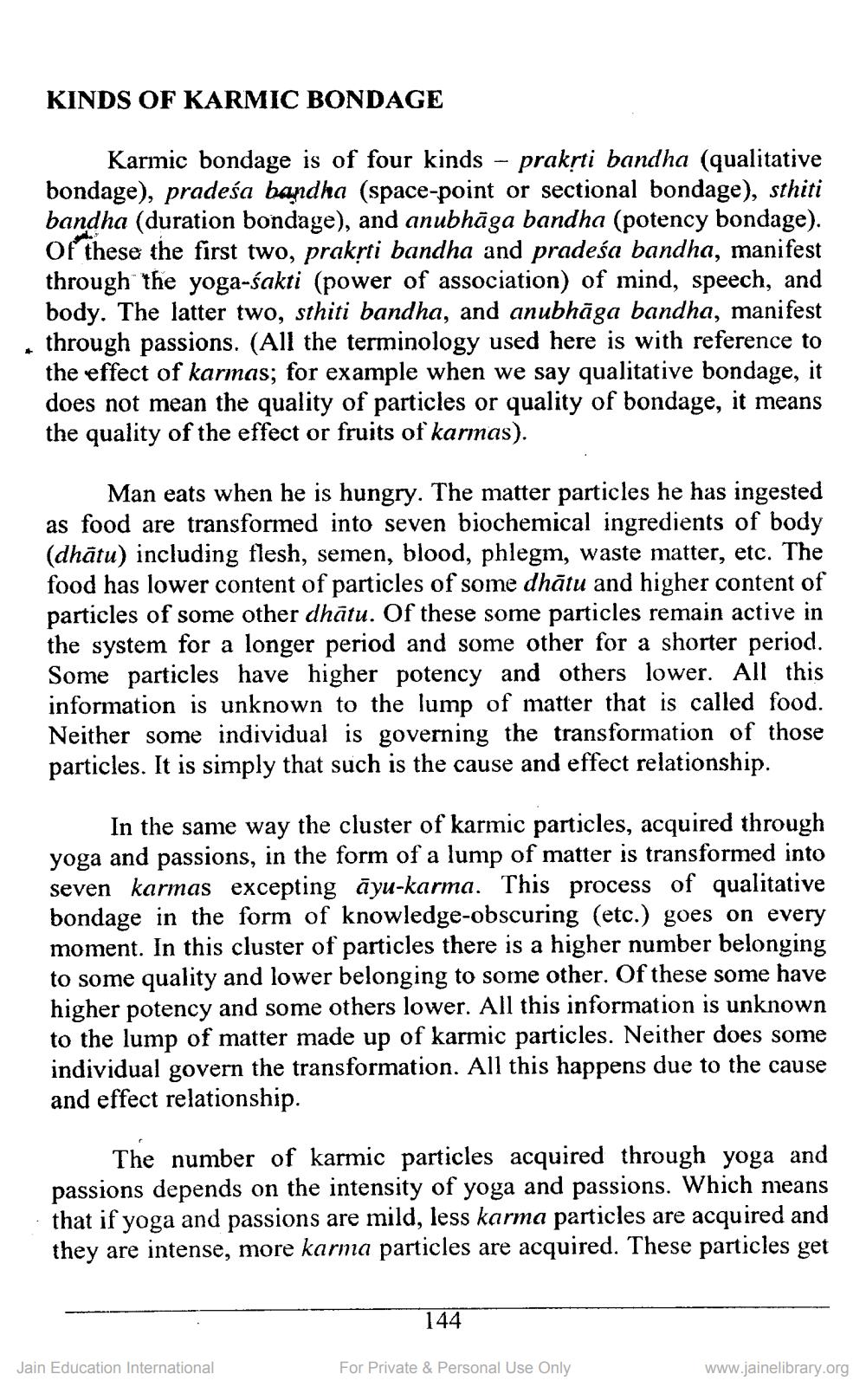________________
+
KINDS OF KARMIC BONDAGE
Karmic bondage is of four kinds – prakṛti bandha (qualitative bondage), pradeśa bandha (space-point or sectional bondage), sthiti bandha (duration bondage), and anubhāga bandha (potency bondage). Of these the first two, prakṛti bandha and pradeśa bandha, manifest through the yoga-śakti (power of association) of mind, speech, and body. The latter two, sthiti bandha, and anubhāga bandha, manifest through passions. (All the terminology used here is with reference to the effect of karmas; for example when we say qualitative bondage, it does not mean the quality of particles or quality of bondage, it means the quality of the effect or fruits of karmas).
Man eats when he is hungry. The matter particles he has ingested as food are transformed into seven biochemical ingredients of body (dhātu) including flesh, semen, blood, phlegm, waste matter, etc. The food has lower content of particles of some dhātu and higher content of particles of some other dhātu. Of these some particles remain active in the system for a longer period and some other for a shorter period. Some particles have higher potency and others lower. All this information is unknown to the lump of matter that is called food. Neither some individual is governing the transformation of those particles. It is simply that such is the cause and effect relationship.
In the same way the cluster of karmic particles, acquired through yoga and passions, in the form of a lump of matter is transformed into seven karmas excepting ayu-karma. This process of qualitative bondage in the form of knowledge-obscuring (etc.) goes on every moment. In this cluster of particles there is a higher number belonging to some quality and lower belonging to some other. Of these some have higher potency and some others lower. All this information is unknown to the lump of matter made up of karmic particles. Neither does some individual govern the transformation. All this happens due to the cause and effect relationship.
The number of karmic particles acquired through yoga and passions depends on the intensity of yoga and passions. Which means that if yoga and passions are mild, less karma particles are acquired and they are intense, more karma particles are acquired. These particles get
Jain Education International
144
For Private & Personal Use Only
www.jainelibrary.org




